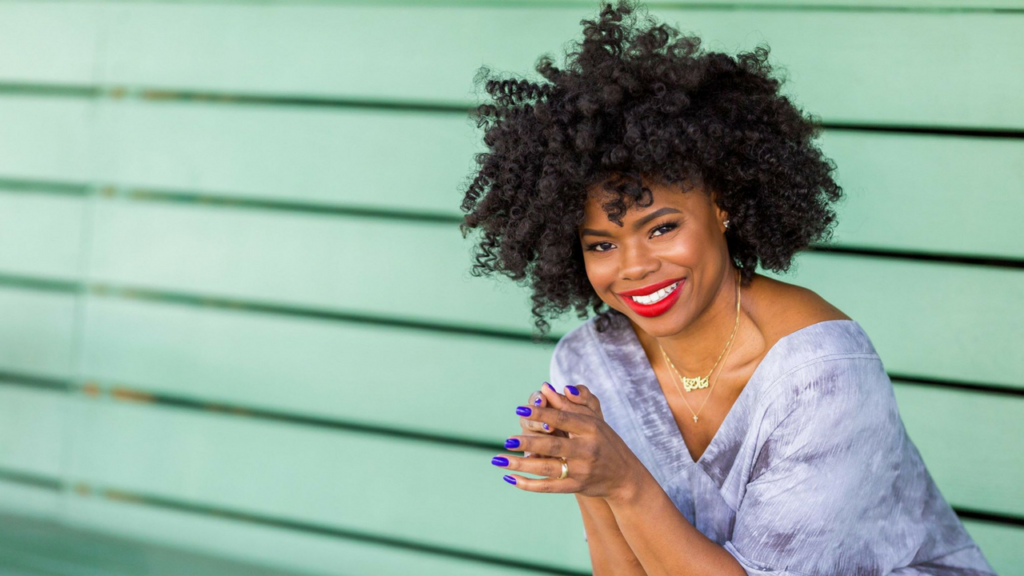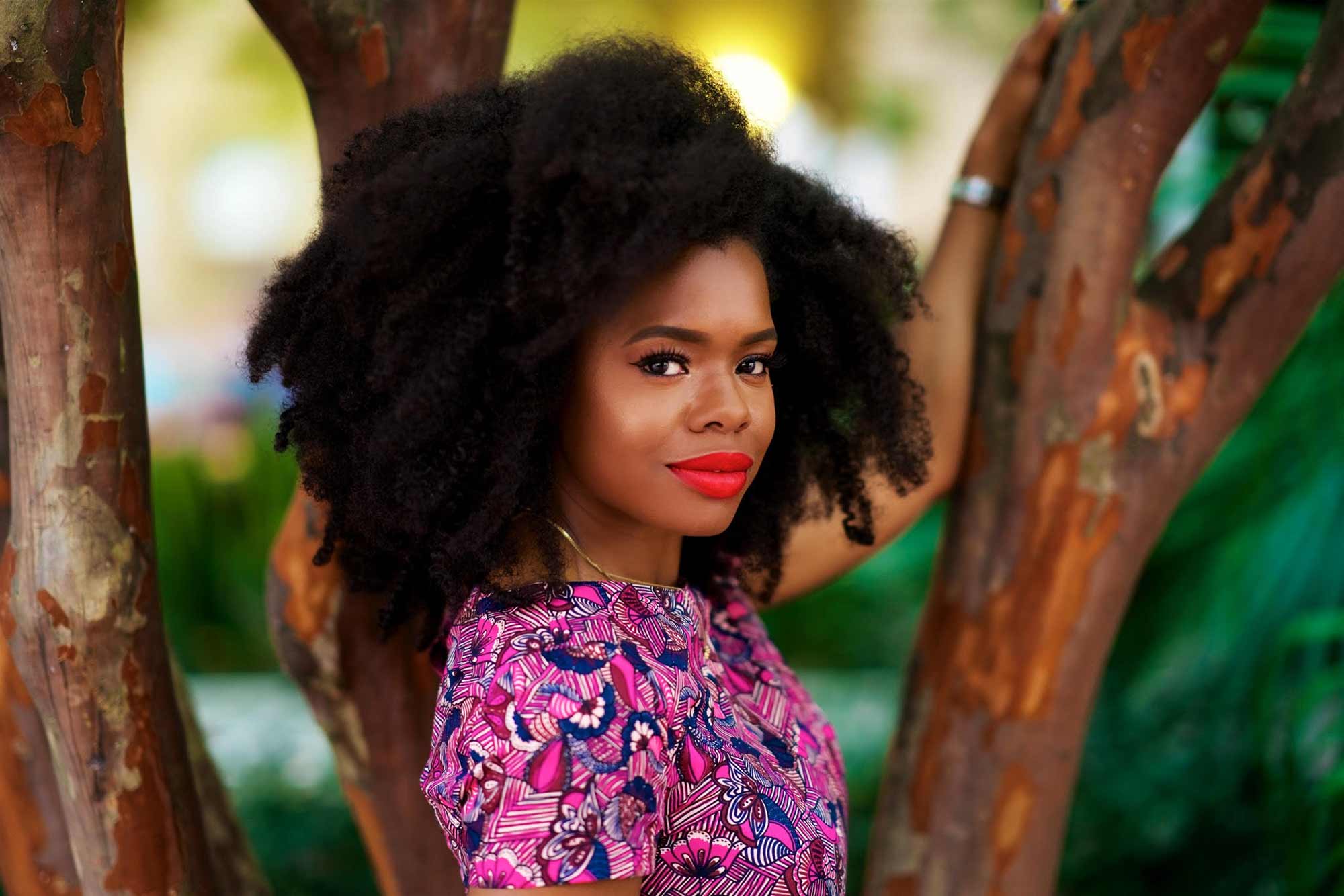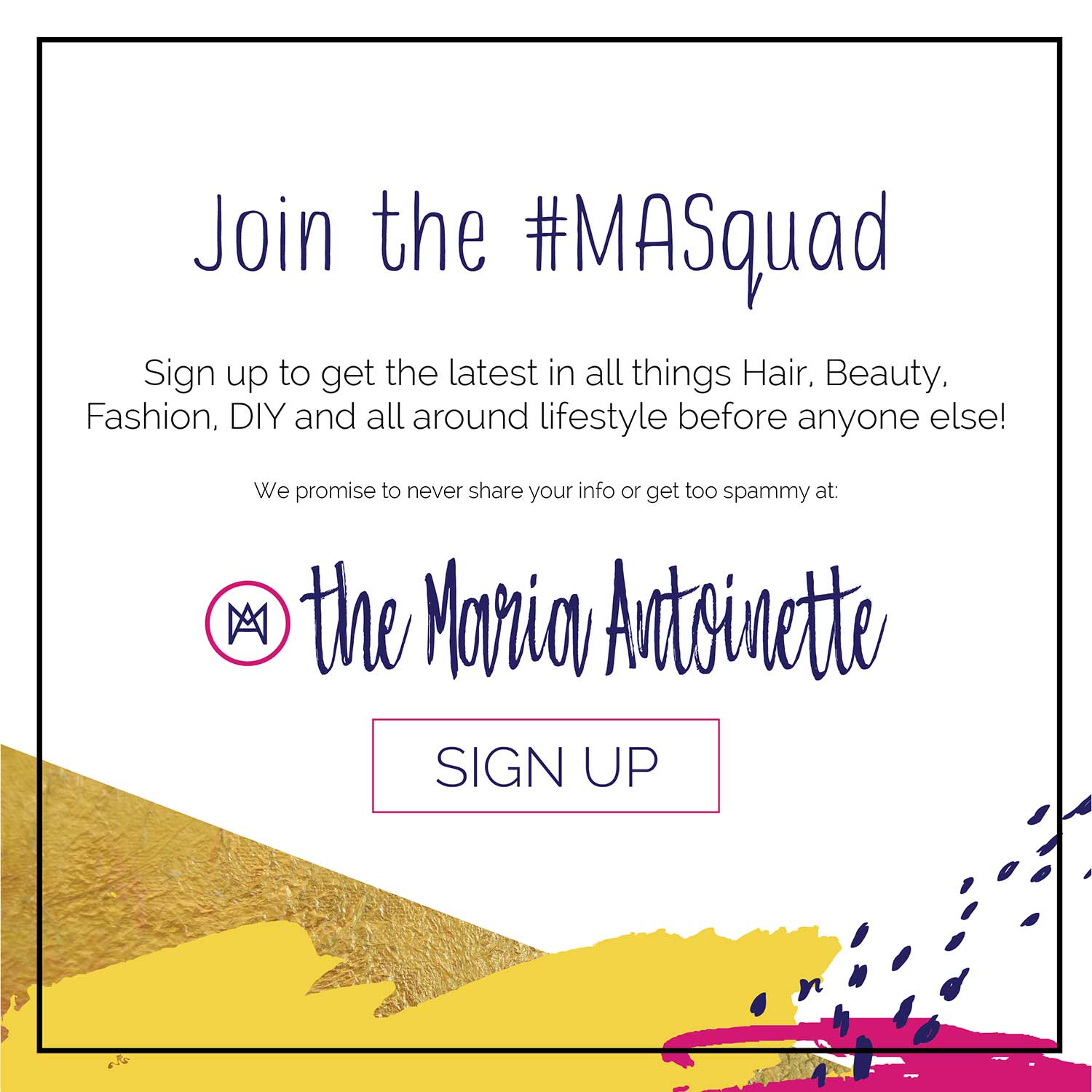Every time I do a hair video you guys always ask about scalp care so I teamed up with Head & Shoulders to bring you this scalp care live chat. This chat is to help clear up all the misconceptions about scalp care.
I learned so much from speaking with the Head & Shoulder’s team and chemists that it’s gonna blow your mind! This scalp chat is for all hair types, whether you’re relaxed or natural.
Scalp issues are the root, see what I did there, to all our hair problems. And because when we talk about hair maintenance we usually just focus on the hair and not the scalp where the hair grows out of.
So let’s jump into how to care for our scalp questions that were submitted by our viewers.
How long should I wait to wash my hair in between wash days?
Typically, for black women, we shampoo our hair once every seven days due to the sebum (an oily secretion of the sebaceous glands in our scalp). Because our sebum doesn’t go down easily due to the coarseness and curliness of our hair shaft we tend to not shampoo frequently. So weekly is ideal. Now if you’re active in the gym playing sports or a swimmer you should be rinsing your hair. You can use a co-wash or a leave-in treatment every three days and then shampoo in the next three days.
For non-women of color if you produce a lot of sebum then yes you should shampoo your hair daily but do not put the conditioner on your roots. Apply it to the mid-shaft of your hair down to the tips. This will give you an extra day before you have to shampoo again. But if you don’t have this issue I don’t care what race you are you don’t have to shampoo your hair every day.
Hair Washing Tip: Do not wash your hair with your fingertips. Use the pads of your fingers.
Is it hard to get my hair back to being manageable after washing?
If it’s taking a long time to get your hair back to being manageable that means your hair is lacking moisture, and moisture comes from shampooing. Do you notice stiff dry hair after cleansing it? If so, focus on a deep clean and deep conditioning treatment.
Is there an alternative to tea tree oil?
Tea tree oil is an essential oil that comes from tea trees. Many scientists like to call this a sensational product. Meaning, you put it on your scalp and it’s refreshing and makes your hair feel great. But the truth is, yes it’s an antibacterial and yes it’s good at killing the fungus. However, on the spectrum of doing nothing to using something that is chemically made in a lab, tea tree oil falls in the middle. So if you don’t have hair scabs then this could be a great thing to incorporate into your hair care routine but it’s not something that’s gonna solve your scalp issues.
So an alternative to tea tree oil would be to use a product like Head & Shoulders Leave-on Dandruff Treatment.
Note: Tea tree oil is not something that you should be using on your hair if you have serious scalp issues. This is something that you can use every once and a while during a treatment.
Advertisement
I have dry scalp! Help!
Typically you may not have dry scalp. What you may have is an overgrowth of fungus. Now before you freak out this is something that everyone has as our body is made up of bacterias some of it good and some of it is bad, especially when there’s an excessive amount. This particular bacteria is called, Malassezia Globosa.
Now the Malassezia grows in our sebum and it grows in oil. So if you’re oiling your scalp you’re basically feeding this fungus. So if you find that you have relief after you oil your scalp but find that after two or three days you have to re-oil it’s basically not curing it’s feeding it. By oiling your scalp what you’ve done is increased the probability of your scalp being itchy, of clogging your hair follicles and a whole host of other things that are lowering your probability having your hair grow healthy.
Our scalp produces enough natural oil, which is why we wash our hair to prevent that natural oil from building up. So say for example you wear a sew-in or braids for six weeks, and in that time you don’t wash your hair and when you take it out you have this white residue that’s built up at the base of your braids and your scalp is super tender and you’ve been patting your scalp because it’s itchy. Now you’ve washed your hair and you see it’s grown two or three inches and you’re feeling yourself. But the problem is you haven’t thoroughly washed your hair. Meaning you still have some build up left. So when you go to install your new sew-in or braids and now you have too much of your sebum and now you’ve got dandruff and tender scalp.
Note: Don’t oil your scalp when it itches and don’t scratch it, especially using ends of combs. Why? What you’re doing is breaking the skin on your scalp and you’re damaging your hair follicles. If you open your hair and look at the scalp if you see tiny little open spots that could be from you scratching and damaging or killing the follicle. Be tender to your scalp. Treat it how you would the skin under your eyes.
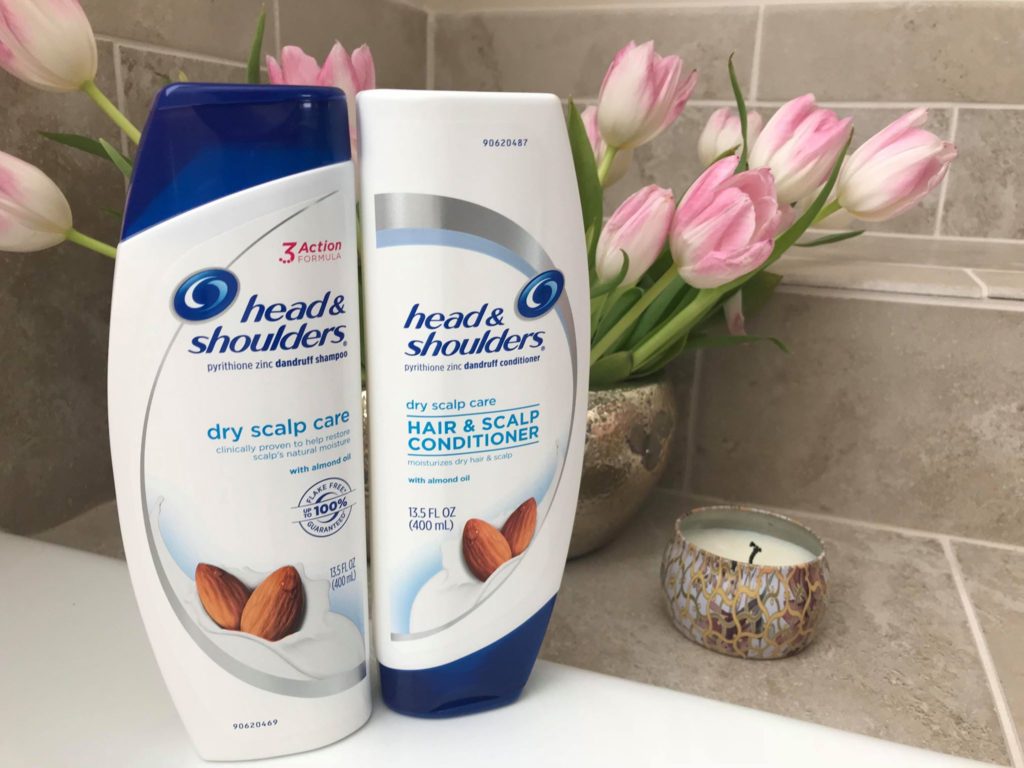
Head & Shoulders Dry Scalp Care with Almond Oil Dandruff Shampoo
Should I oil my hair and ends?
Yes! Oil is a sealant and it locks in moisture, it doesn’t give moisture.
What do you do to stop your hair from itching without scratching or using oils?
That means that’s time to wash your hair. I also use Head & Shoulders Clinical Leave-on Dandruff treatment. Now what’s great about this product is it goes right onto my scalp and it doesn’t mess up my hairstyle even if it’s straight.
I’m also not saying that you shouldn’t oil your hair. What I’m saying is oiling your scalp shouldn’t be the remedy to your itchy scalp. As a matter of fact, the oil shouldn’t even be put onto your scalp since our hair naturally makes it own oil. Oil should be used for the hair since our hair texture and pattern doesn’t allow our natural oil or sebum to travel down the hair shaft.
What do you recommend for the treatment of psoriasis on the scalp?
I am not a doctor so I will always tell you to visit a dermatologist. They will prescribe you something that you can use. But you can also use the Head & Shoulders Clinical Leave-in Dandruff treatment in between your washing.
Can I grow back breakage in my crown?
Normally breakage can come from stress and it could be the area in your hair that’s most affected. I would look into using lavender oil as it promotes hair growth. If you’re not pregnant you can also use rosemary oil. Massage it into your scalp the day before you wash your hair and you’ll start to feel stimulations there. The reason why pregnant women should not use rosemary oil is it will increase your blood pressure and send you into early labor.
How do you take care of finer hair on your edges?
I have finer edges and I’ve even been called out for not having edges, but I do. It’s just fine baby hairs. I suggest if you’re having issues with your edges to invest in a satin scarf. I cannot live without mine. I’ll wear it regardless if I have a roller set, protective style or sew-in. Satin wraps and bands help to keep the moisture in and it helps to keep the hairs from getting tangled in the fabric of my pillowcase and breaking off.
How often should I use Head & Shoulders Leave-on Dandruff Treatment?
I use the leave on treatment in between my shampoos so every third day. The key Is to use it when you need it. In between shampoos, when your scalp is tender, tight from dryness, etc. It comes is a spray so you don’t have to disturb your actual hair and can focus on the scalp alone.
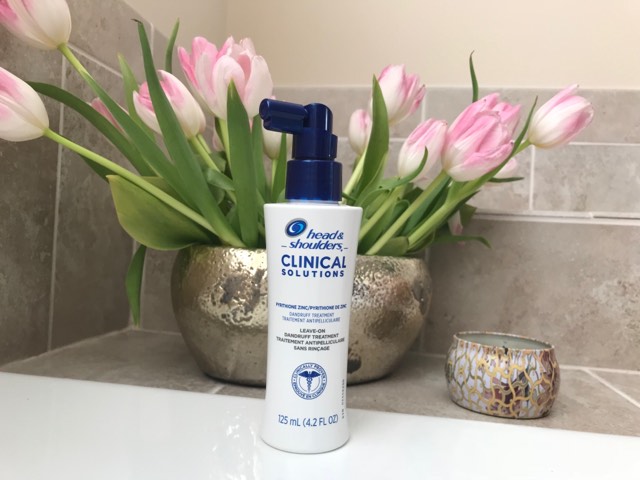
Head and Shoulders Clinical Solutions Leave-On Dandruff Treatment
What type of shampoo/conditioner do you recommend?
I like moisturizing shampoo and conditioner. But remember everyone’s hair is different so what may work for me might not work for you. I know people like co-washing but remember that cannot be your only method of cleansing your hair. You need a shampoo to break through those layers of natural oil and the oil you add to your hair and really cleans it so that you don’t have a build up and I find a moisturizing deep cleansing shampoo does the trick.
In addition, what I’ve found with shampoos that really cleanse it can leave your hair feeling very stiff like straw so what I recommend is following up with a deep conditioner so that you can restore those proteins and get your hair back to feeling soft and flexible.
Note: Shampoo is designed to give moisture. It magnetizes dirt to pull it away and to put moisture back into your hair because shampoo opens your follicles and it allows water to get inside. It also removes the debris that’s inside of the follicle which allows water to penetrate even deeper.
Tip: Twist your hair into sections before you get into the shower and wash your hair section by section so that the shampoo is really penetrating your scalp and follicles leaving your hair clean.
Is gel good for your hair and is mousse a better alternative?
Both of these will still give you product build up. You can use whatever you want to use but the key is having a product that will wash it out thoroughly. Gel can be especially unhealthy if you leave it on for too long. The reason is that most gels have alcohol it will pull moisture from your hair and leave your hair feeling dehydrated. So if you leave the gel on your hair for say seven days with your protective style you have to make sure that you’re cleansing your hair to get that gel off of there. And also try not to have gel as your go-to. Switch it up and use a moisturizing cream.
I love stylers like mousse, gels, etc. and I lean more towards products where the first ingredient is water. Why? Because it’s water soluble and will wash right out.
What do you do when your scalp feels tender?
I find that when my scalp is tender it’s close to that time of the month so it can be hormonal. It can also be because of tension. Or worse when it’s because I’m not properly caring for it.
Does heat make the scalp fungus worse?
No, because by the time you get to the steam portion of your regimen you should have already rid your hair of the all the build-up when you washed it.
Are flaking and dandruff the same thing?
No. Flaking can be product build-up and dandruff is dead skin cells that are flaking off the scalp. Those are two separate things. So yes, dandruff can be flaky.
What is your advice for someone with high or low porosity hair?
First, let’s start with what that means. Our strands are built in layers (for a visual place one hand on top of the other in layers). Inside the strand, you have your nucleus and to protect that you have all the fibers that build up in layers. So if you have high porosity hair the shaft remains open regardless if it’s wet or dry. Which means moisture can get in and out easily. If you have low then that means the shaft is closed.
How to test what porosity you are?
When you’re in the shower after you’ve washed your hair take a small section of hair and rub up and down. If you rub up and down and its smooth then you have low porosity hair. Meaning the shaft is closed tight. No moisture can get in or out.
If you rub down the shaft and it’s smooth but you rub up and it’s rough and prickly then you have normal porosity hair.
If you rub up and down the shaft and it’s prickly then you have high porosity hair where moisture is flowing in and out easily.
Note: You should always wash your hair in warm water and rinse your conditioner out with cold water to close the hair shaft so that you can lock in that moisture.
How do hot showers affect your hair?
If you wear a shower cap it will create a greenhouse effect and you can lose moisture even if you aren’t washing your hair. Also, hot showers aren’t good for your skin. I know they feel good but if you find yourself having tight itchy skin when you get out it’s because you’ve removed all your natural sebum. This ultimately affects your skin’s elasticity and its ability to look youthful. Turn the shower water down.
Do you wash your extensions before using them?
Yes. I wash my braiding hair in vinegar due to the alkaline coating that’s found on it. I’ve found that women who say their scalp is itchy haven’t soaked the hair prior to the installation and it’s irritating them.
I soak my extensions for 20 minutes with a half sink of lukewarm water and cup of apple cider and it distilled vinegar.
So check out the video for even more tips. Also, comment below as your questions and/or answers could help someone as this is a community where we encourage and help each other!
Latest posts by Maria Antoinette (see all)
- 10 Romantic Date Night Ideas For Any Time of The Year - January 26, 2023
- Tips To Help You Reconnect With What Brings You Joy - January 19, 2023
- Planning A Road Trip? Here Are Some Key Tips You Should Know - January 12, 2023

